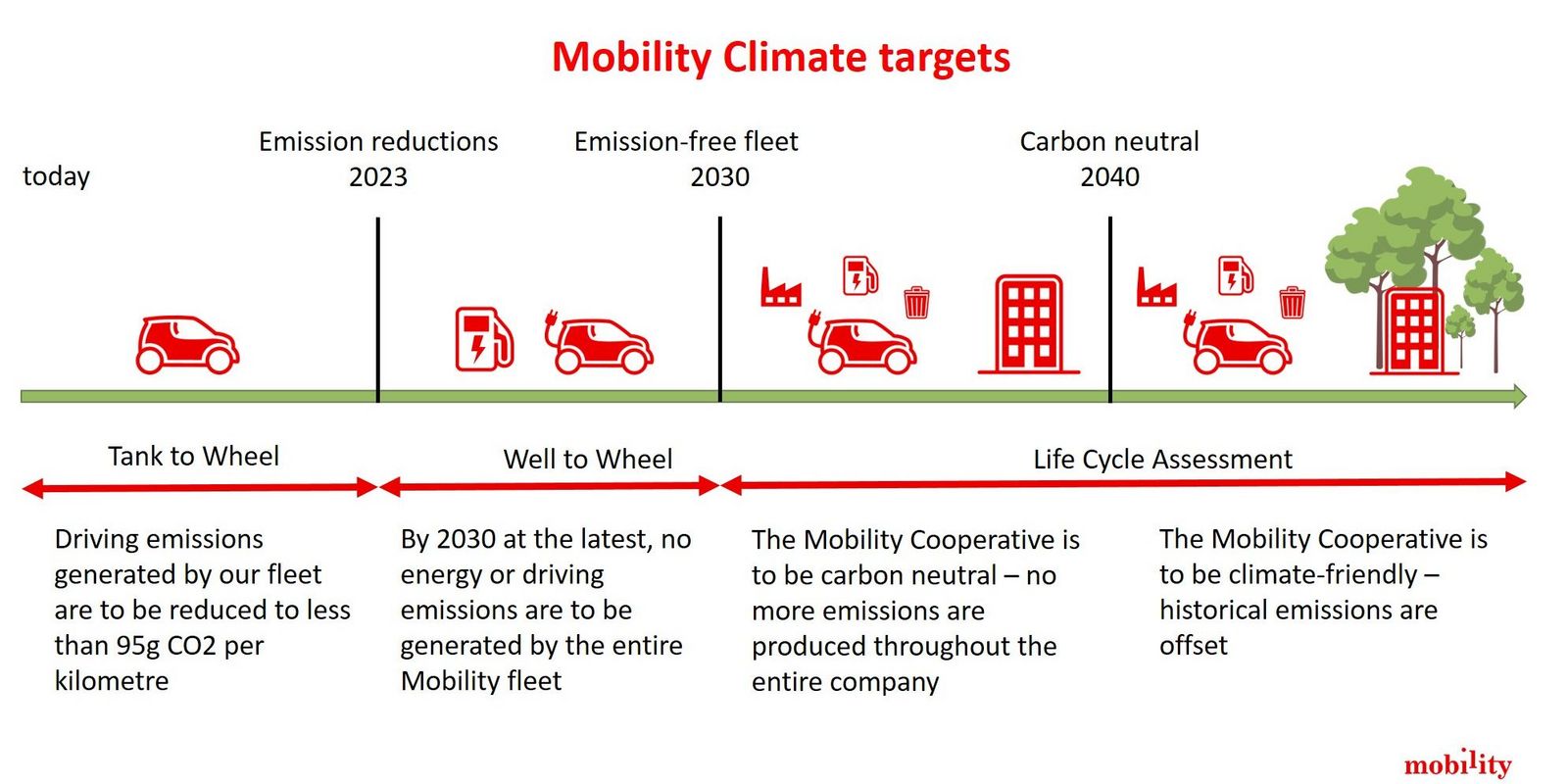Sustainability is deeply rooted in Mobility’s DNA: According to statistics provided by Interface, car sharing reduces the number of privately owned cars on Swiss roads by 35’500 and saves tens of thousands of tons of CO2 every year. Mobility is now setting a loud new exclamation mark in terms of climate protection: “Our long-term goal is to become completely carbon neutral as a company,” says CEO Roland Lötscher. In order to achieve this, the entire Mobility fleet will be electrified within ten years, so all cars will be emission-free during use. This is will be quite some feat: after all, the company currently offers 130 vehicles that run on electricity and 100 on biogas.
« We want to do our best to protect the environment and ensure the world is worth living in for future generations. »
The challenge of the charging infrastructure
The biggest obstacle for Mobility to overcome is the charging infrastructure for supplying its e-cars with electricity from renewable sources. It is expensive and complex to build. “But the main problem is that we only rent our parking spaces – we don't own them. This means we can only achieve electrification in collaboration with others,” says Lötscher, adding that the company is doing everything it can to come up with solutions. “We see partnerships as the best option here.” Lötscher says Mobility is open to a wide variety of ideas and is confident that it will be possible to initiate the first projects before too long. The cooperative also hopes manufacturers will simplify and standardise charging processes and that the public sector will increasingly provide funding for the charging infrastructure.
Carbon neutrality by 2040
While Mobility aims to be emission-free (well to wheel) by 2030, the goal for 2040 is carbon neutrality (life cycle assessment): this not only includes how the vehicles are powered but covers the entire range of emissions generated by the cooperative and the products it uses. Examples include commuting by employees, suppliers’ carbon footprint, and the grey energy generated in the manufacture of vehicles and their batteries. After 2040, the company even has the vision of retroactively offsetting emissions generated in the past (negative emissions).

Carbon offsetting through "Cause We Care"
In order to have both an independent monitoring body for its sustainability measures and a professional partner at its side, Mobility is strengthening its long-standing cooperation with the climate foundation Myclimate and is participating in the Myclimate initiative “Cause We Care”. This initiative allows customers to continue to voluntarily opt for carbon offsetting while also supporting Mobility in its swift development of sustainable transportation.

Your comment